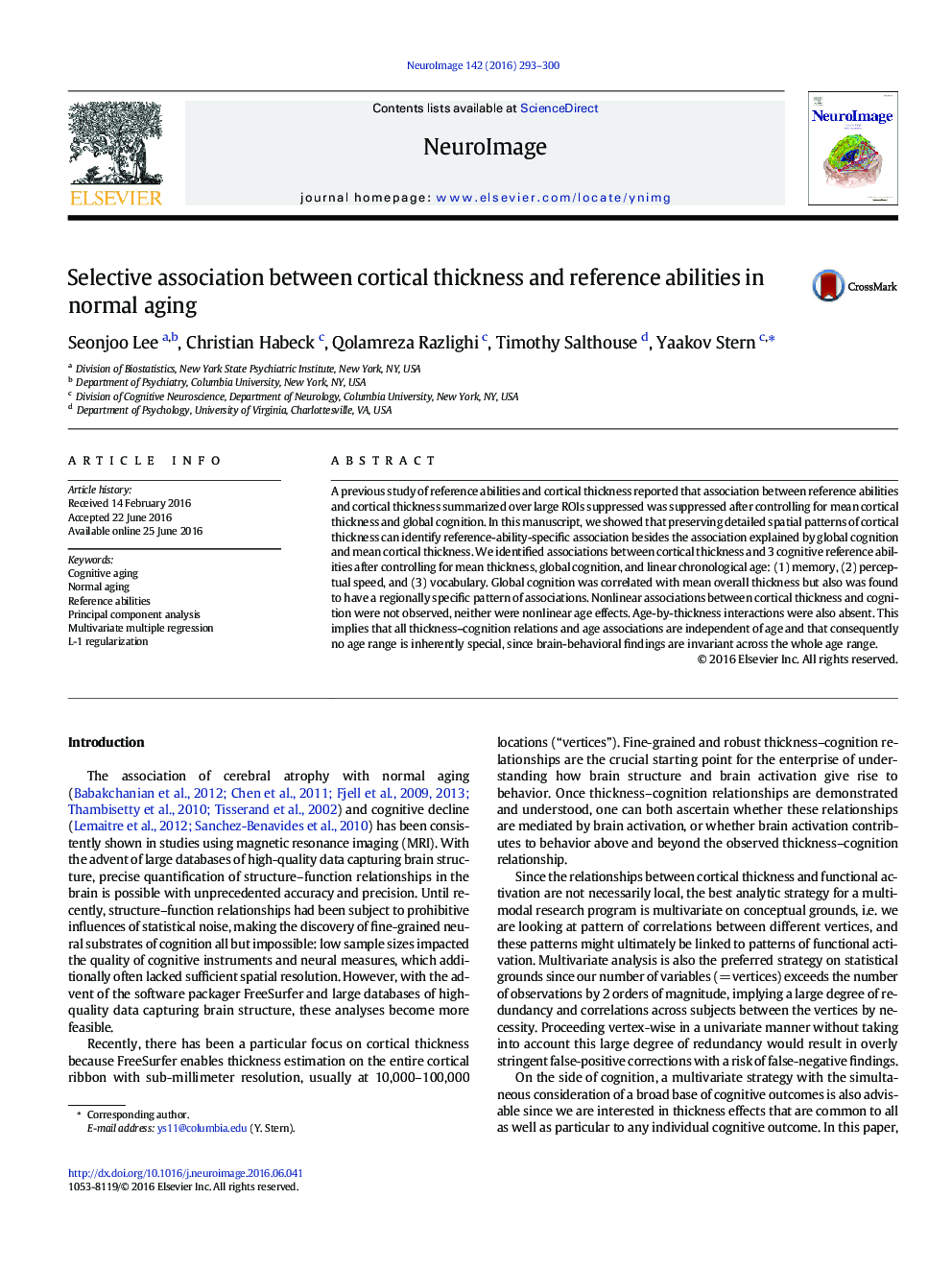| Article ID | Journal | Published Year | Pages | File Type |
|---|---|---|---|---|
| 5631438 | NeuroImage | 2016 | 8 Pages |
â¢Preserving detailed spatial patterns of cortical thickness identified reference ability-specific association.â¢Principal component analysis on cortical thickness evaluated at vertices revealed orthogonal spatial patterns.â¢We found selective cortical thickness-cognition associations controlling for global cognition and mean cortical thickness.â¢Identified cortical thickness-cognition associations were mostly linear.â¢Global cognition was highly associated with both mean cortical thickness and other regional patterns.
A previous study of reference abilities and cortical thickness reported that association between reference abilities and cortical thickness summarized over large ROIs suppressed was suppressed after controlling for mean cortical thickness and global cognition. In this manuscript, we showed that preserving detailed spatial patterns of cortical thickness can identify reference-ability-specific association besides the association explained by global cognition and mean cortical thickness. We identified associations between cortical thickness and 3 cognitive reference abilities after controlling for mean thickness, global cognition, and linear chronological age: (1) memory, (2) perceptual speed, and (3) vocabulary. Global cognition was correlated with mean overall thickness but also was found to have a regionally specific pattern of associations. Nonlinear associations between cortical thickness and cognition were not observed, neither were nonlinear age effects. Age-by-thickness interactions were also absent. This implies that all thickness-cognition relations and age associations are independent of age and that consequently no age range is inherently special, since brain-behavioral findings are invariant across the whole age range.
